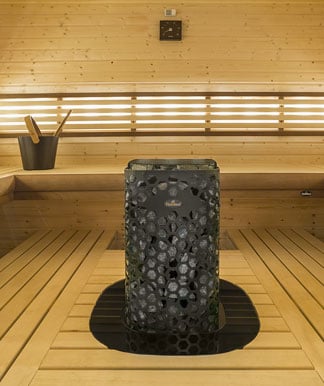Traditional Sauna for Beginners
Traditional Sauna for Beginners
Blog Article
The Definitive Guide for Traditional Sauna
Table of ContentsThe Facts About Traditional Sauna RevealedWhat Does Traditional Sauna Mean?Not known Incorrect Statements About Traditional Sauna The Definitive Guide to Traditional Sauna
Many of the weight shed in a sauna is water loss and is re-gained upon rehydrating. Without an uncertainty sauna can be an important part of a healthy weight loss program. To look at the distinctions in between traditional and IR saunas, I will divide these into proven, theoretical, and produced differences.Therefore, the best factor in the saunawhich goes to the ceiling straight above the sauna heateris generally between 185 and 190 F. Traditional Sauna. Claims that a conventional sauna surpasses 200 F is just not true and not relevant for electrical saunas offered in the US. The temperature for a far-infrared sauna is typically set in between 120 and 140 F; nevertheless, unlike the conventional sauna, the goal in and IR area is not to attain a high temperature level
Because of this, the temperature distinction is practically unimportant, considering that excessive sweating results in both sauna kinds, yet the approach of warming the body is various. In an IR sauna the bather will feel hot and will sweat a lot, however at a lot reduced temperature levels. Therefore, if the goal is to invest longer periods of time in the sauna, the IR sauna is a good selection.

Traditional Sauna Fundamentals Explained
When the high temperature is attained, the elements cycle on and off to keep the heat. Many standard sauna customers enjoy pouring water over the rocks to create heavy steam to elevate sauna moisture degrees. The advantages of pouring water over the rocks include: making the space much more comfy, dampening the nasal flows, and permitting the usage of aromatherapy by mixing essential oils with the water.
In a far-infrared sauna, the warmth waves permeate the body to successfully warm the body and increase the body core temperature level. To accomplish this increased temperature, Far-infrared emitters develop infrared power which is close to the same wavelength as that which the body normally emitsoften described as the "Important Array" of 7 to 14 microns), so the energy is well obtained by the body.
When the power gets in the body, it triggers the body temperature to increase and eventually results in sweating. In an infrared sauna it's essential for the emitters/heaters to continue to be on almost frequently. Given that great post to read there is no mass of rocks to maintain heat, the sauna will cool down if the emitters shut down.
As mentioned over, the sauna bather in an infrared room wishes to position himself before running emitters to obtain maximum gain from the warm. The home heating time for the 2 rooms can be extremely various, relying on how the spaces are made use of. For a traditional sauna, a bather must permit 30-40 minutes for the room to accomplish a wanted temperature level and to properly pre-heat the rocks.
Rumored Buzz on Traditional Sauna
A well constructed sauna will usually attain a temperature level of 150-160 F in regarding 30-40 mins. For hotter temperature levels, the space might need to heat for a longer duration.
To some, 15 minutes was "lost" while the infrared power warmed the wood panels instead of heating a body, while others find a pre-heated room to be a lot more comfy and see this page believe an elevated starting temperature is required to start sweating. The length of recommended usage for each and every space is around the exact same (10-15 mins per session); nonetheless, because of the reduced air temperatures and the ability to really feel the effects of infrared warmth much faster than a conventional sauna, it is not uncommon for an individual to invest a total of 20-30 minutes in an infrared sauna.
Typical saunas have a tendency to be larger (therefore make use of even more electrical power) than infrared saunas, although standard saunas are definitely readily available in one and 2 person dimensions as well. For a two-person traditional sauna, 5x6 or 5x7 size is most preferred. The top bench can easily seat two or three individuals and is additionally long sufficient to exist down during the sauna session.


The ordinary price per kWH of power in the U.S. is about $0.11, so a 4.5 kW heater will cost approximately $.50 to compete one hour, if the heating unit runs constantly for one hour. Commonly a sauna heating unit will run for 75% of the very first hour and 50% of subsequent hours on considering that the aspects cycle once the set temperature level is achieved.
Rumored Buzz on Traditional Sauna
A 2 person far-infrared room is generally literally smaller sized than a typical sauna, commonly about 4' x 4' or smaller sized. The IR heating system is generally 1.5-1.7 kW making use of a 120 volt 15 amp plug-in service. Since the space can be utilized sooner than a sauna Read More Here area, we will certainly think the space is utilized for to of an hour consisting of warm up time.
There is a seldom discussed distinction in the social experience in between the 2 rooms. While our culture has shed some of the social benefit of the traditional sauna experience, it can be very socially fulfilling. From family time in the sauna, to heart-felt discussions with better halves, to sauna partiesthe standard sauna experience can bring about intimate interacting socially.
The majority of higher end infrared spaces include tinted light treatment, noise systems and full-glass fronts.
Report this page